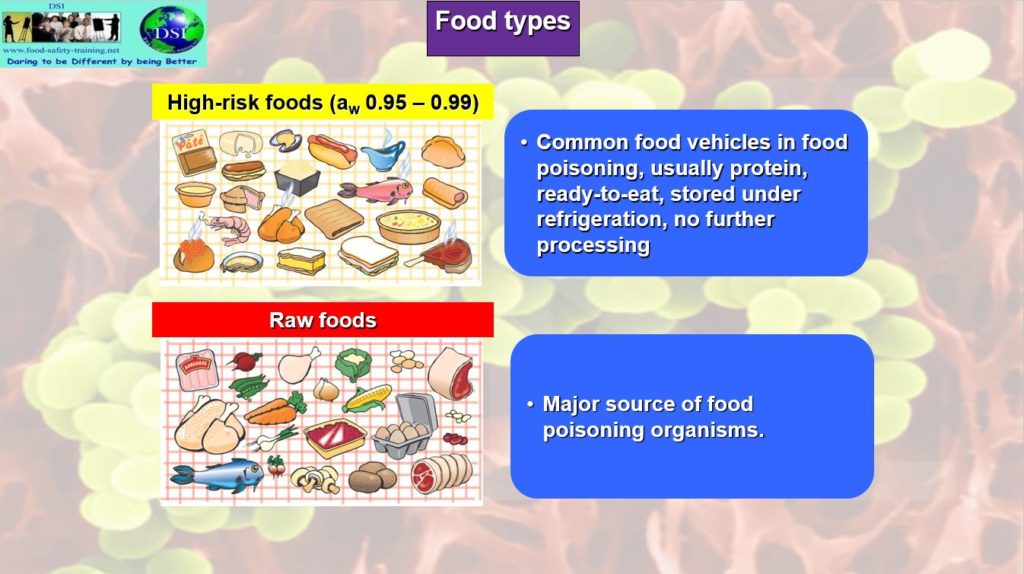High Risk and Raw Food
High-risk foods (aw 0.95 – 0.99)
• Are usually identified as food vehicles in food poisoning outbreaks
• Ready-to-eat foods which support the rapid multiplication of food poisoning bacteria
• Intended for consumption without treatment, such as cooking, which would remove or destroy these bacteria
• Usually protein (NB cooked rice-carbohydrate)
• Require refrigerated storage
• Keep separate from raw foods
Examples:
• Cooked meat and cooked poultry
• Cooked meat products, patés, liquid gravy, stew, meat pies etc. Large cans of pasteurized ham
• Dairy produce, milk(esp. raw milk), cream, custards, ice-cream, dairy based desserts, ripened soft and moulded cheese
• Eggs and egg products, mousse, hollandaise sauce, mayonnaise
• Cooked fish/shellfish and raw bivalves, such as oysters
• Cook-chill meals
• Baby foods
NB Frozen high-risk foods have the available moisture removed and are safe whilst frozen
Raw foods (intended for cooking/processing)
• Often contaminated with large numbers of food poisoning bacteria
• Risk of food poisoning if consumed without thorough cooking, heat treatment, fermentation, acidification, washing (risk from E. coli O157), curing etc.
• Keep separate from ready-to-eat foods, even if frozen(risk is probably low regarding packaged frozen raw food)
